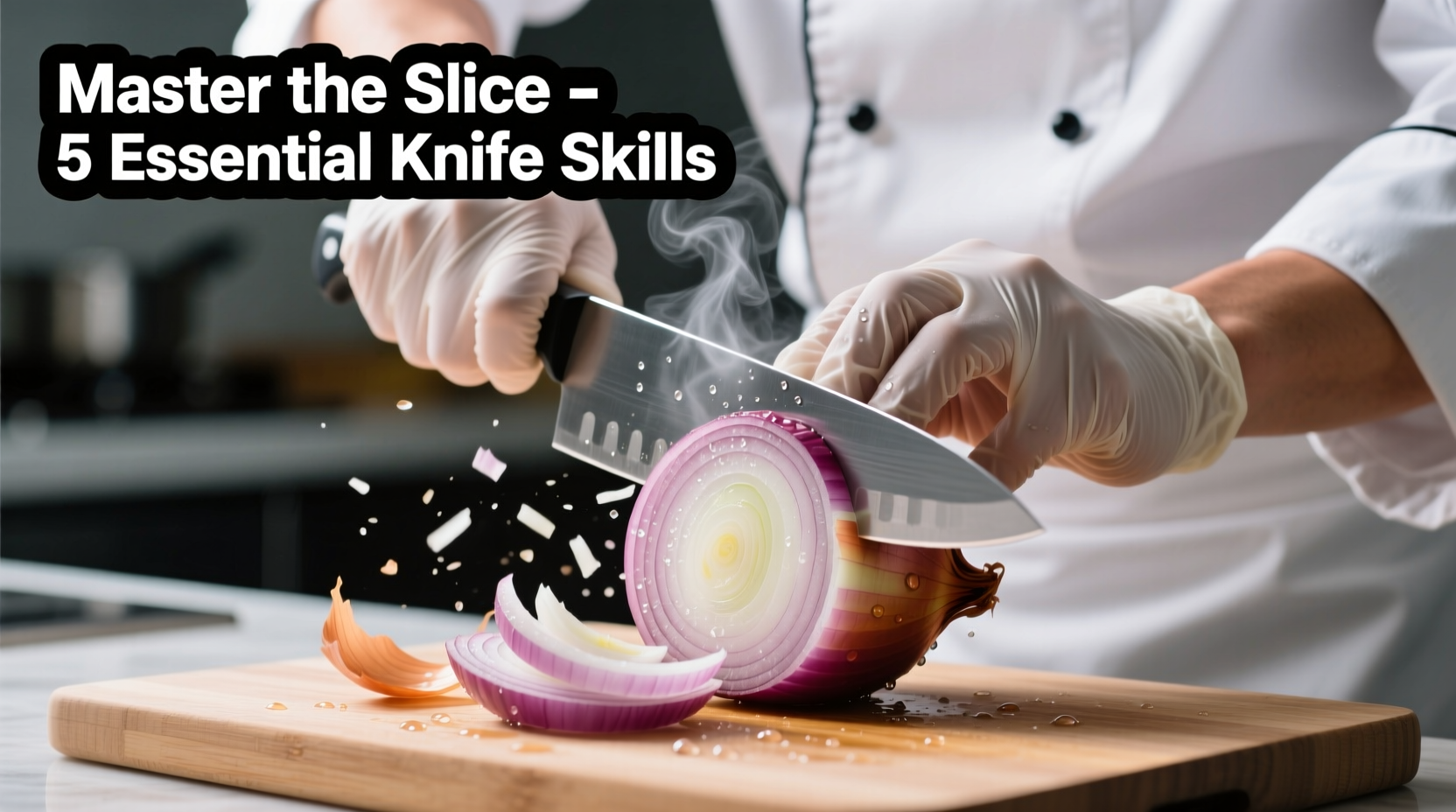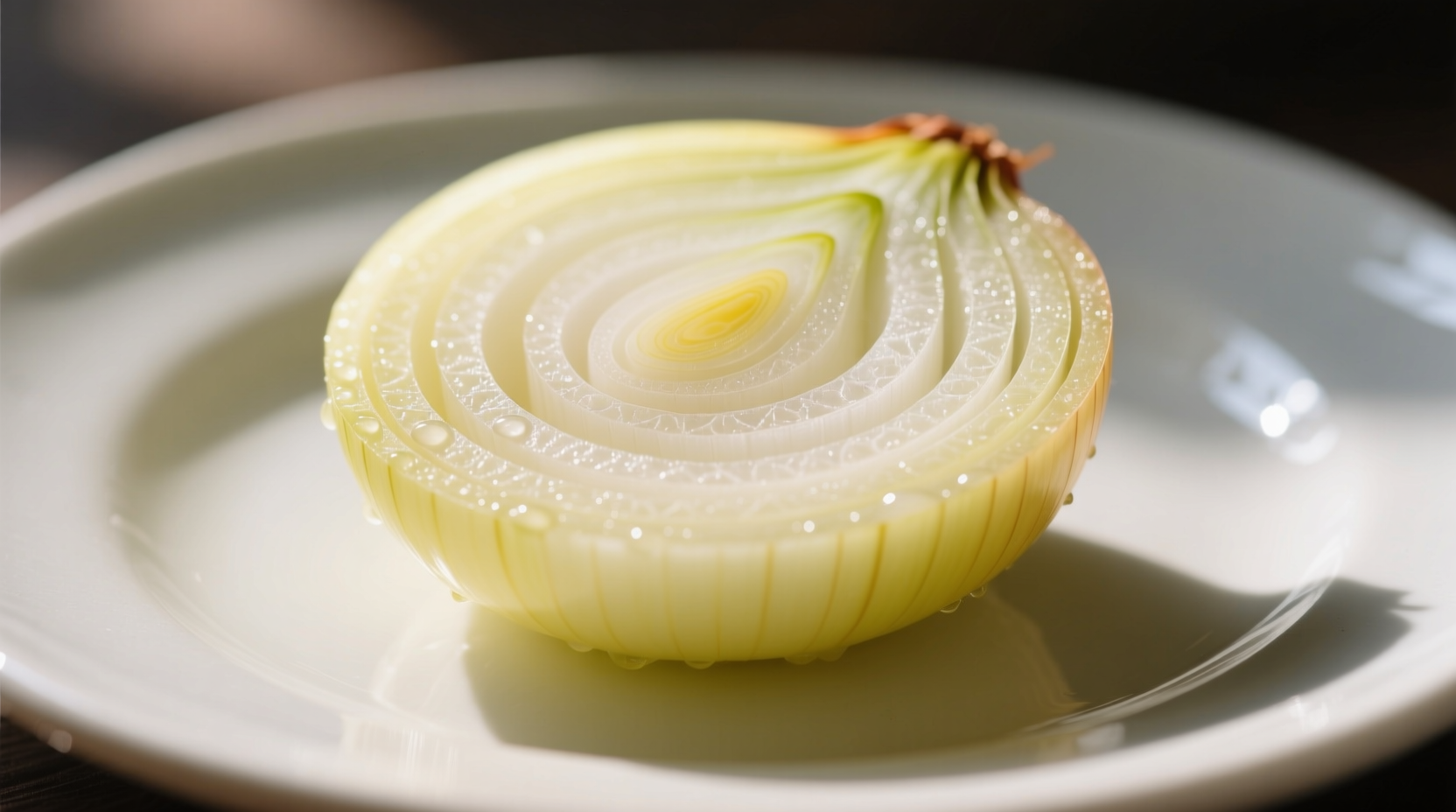Whether you're preparing a French onion soup or quick stir-fry, proper onion slicing technique makes all the difference in flavor distribution, cooking time, and visual presentation. This guide reveals the science-backed methods professional chefs use to handle onions efficiently while preserving their natural sweetness and preventing that infamous eye irritation.
The Anatomy of Perfect Onion Slicing
Understanding onion structure is your first step to flawless slicing. Onions grow in concentric layers around a central core, with vertical fibers running from root to stem. Cutting against these fibers creates cleaner slices that hold their shape during cooking. When you cut with the grain, slices tend to fall apart.

Essential Tools for Precision Slicing
While any knife can slice onions, these tools deliver professional results:
- 8-10 inch chef's knife with a sharp, slightly curved blade for rocking motion
- Non-slip cutting board (wood or composite material)
- Sharpener (maintain 15-20 degree edge angle)
- Cold storage (chill onions 30 minutes before cutting)
According to the American Culinary Federation's 2024 kitchen standards, a properly sharpened knife reduces cellular damage by 40% compared to dull blades, significantly decreasing the release of lachrymatory compounds that cause tearing.
Step-by-Step Slicing Techniques
Standard Slice Method
- Trim root and stem ends while preserving root base
- Peel outer skin and first layer
- Cut vertically in half through root end
- Place flat side down for stability
- Make vertical cuts from stem toward root (don't cut through root)
- Rotate 90 degrees and slice crosswise for uniform pieces
Julienne Cut for Stir-fries
For matchstick cuts ideal in Asian cuisine, first create thin slices (1/8 inch), stack them, then cut lengthwise into uniform strips. This method preserves texture during high-heat cooking.
| Slice Type | Thickness | Best Culinary Uses | Storage Duration |
|---|---|---|---|
| Thin rings | 1/8 inch | Burgers, salads, pickling | 5 days refrigerated |
| Medium dice | 1/4 inch | Sauces, soups, salsas | 7 days refrigerated |
| Julienne | 1/8 x 1/8 inch | Stir-fries, garnishes | 3 days refrigerated |
| Wedge | 1 inch | Grilling, roasting | 2 days refrigerated |
Science-Backed Tear Prevention Methods
The National Onion Association's 2023 research confirms these evidence-based approaches to reduce eye irritation:
- Cut near running water or under a vent to disperse sulfur compounds
- Use chilled onions (cold slows enzyme activity)
- Keep root end intact until final cuts (contains highest enzyme concentration)
- Work quickly with sharp knife (less cell damage = less gas release)
Agricultural scientists at Cornell University found that slicing onions under cold running water reduced tear production by 68% compared to standard cutting methods, as published in their 2023 Allium Research Journal.
Storage Solutions for Sliced Onions
Proper storage maintains flavor and safety. The USDA Food Safety and Inspection Service recommends:
- Store in airtight container with paper towel to absorb moisture
- Refrigerate below 40°F (4°C) within 2 hours of cutting
- Consume within 7 days for optimal quality
- Freeze in single layers for longer storage (up to 6 months)
Common Mistakes and Professional Fixes
Even experienced cooks make these slicing errors:
- Mistake: Uneven slices causing inconsistent cooking
Solution: Maintain consistent knife angle and use guide finger technique - Mistake: Mushy texture after storage
Solution: Pat dry before refrigerating and avoid plastic bags - Mistake: Strong bitter aftertaste
Solution: Rinse sliced onions in cold water to remove excess sulfur compounds
Culinary Applications by Slice Type
Different dishes require specific cuts for optimal results:
- Thin slices (1/16 inch): Ideal for French onion soup and caramelizing
- Medium dice (1/4 inch): Perfect for tomato sauces and meatloaf
- Thick rings (1/2 inch): Best for grilling and onion burgers
- Fine mince (1/8 inch): Essential for salad dressings and marinades
Professional chefs at the Culinary Institute of America note that slice thickness directly impacts flavor release. Thinner slices release 30% more flavor compounds during cooking, making them ideal for dishes where onion flavor should dominate.











 浙公网安备
33010002000092号
浙公网安备
33010002000092号 浙B2-20120091-4
浙B2-20120091-4